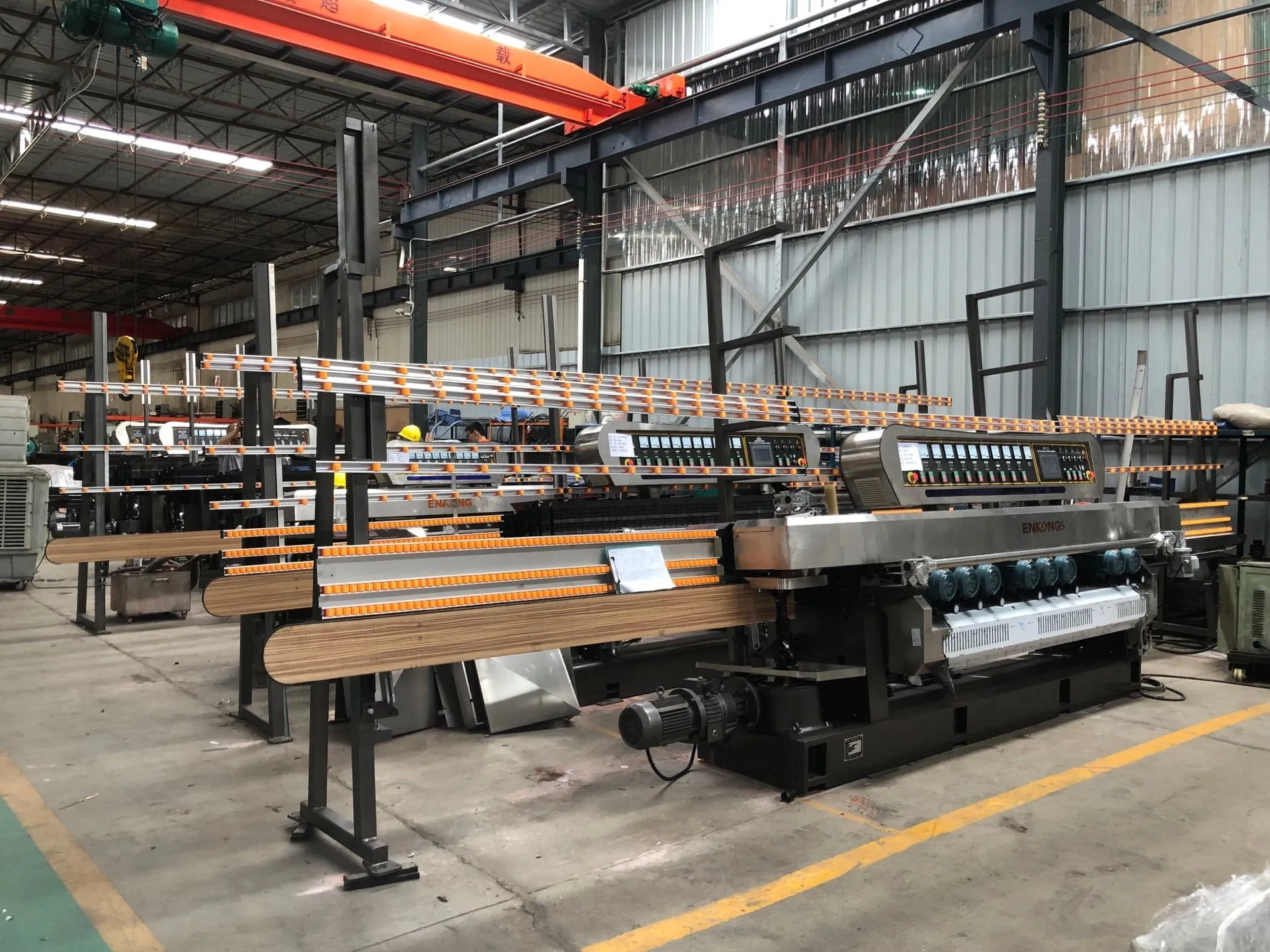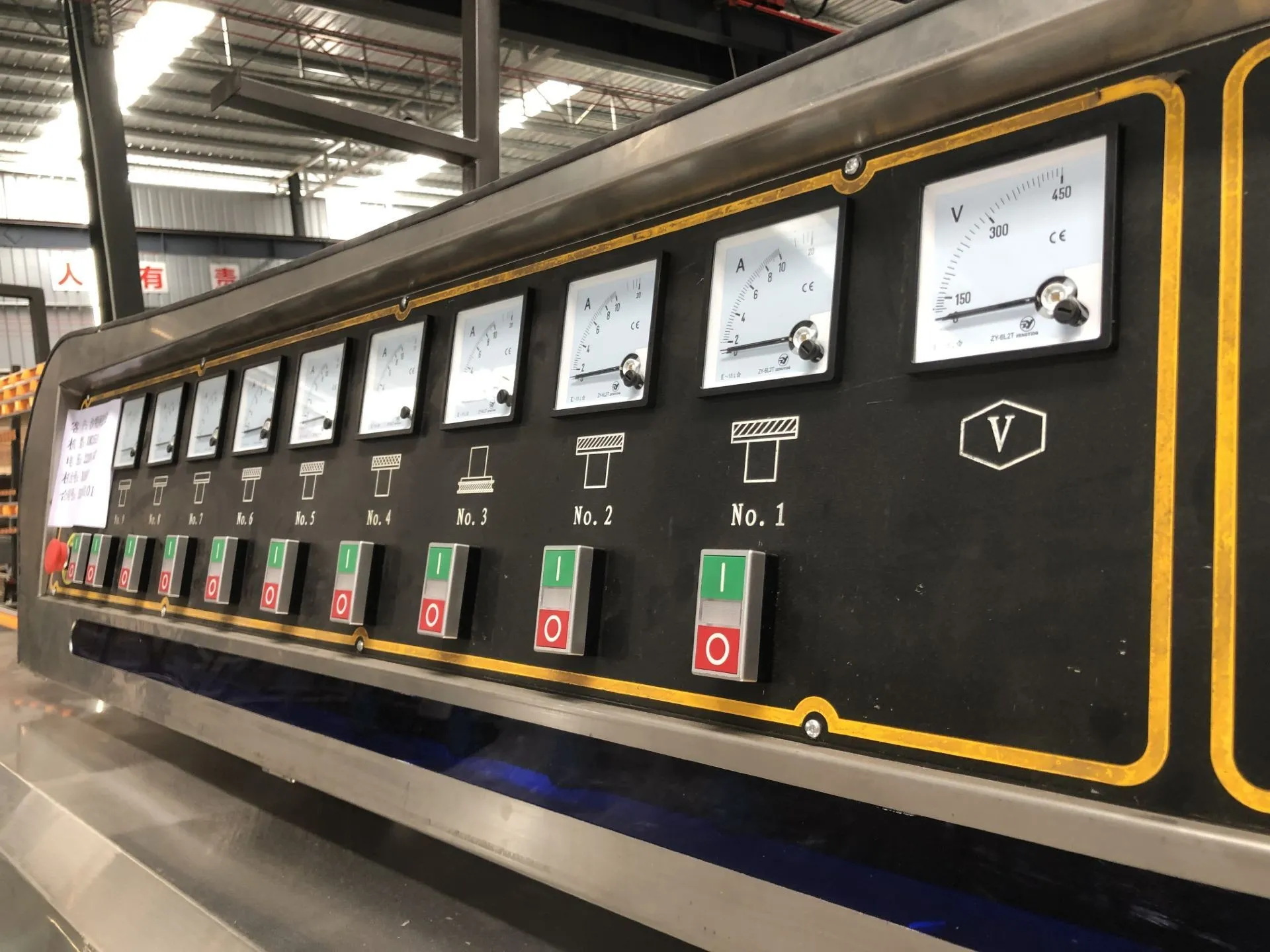Xm371 Straight Line Glass Beveling Machine adopts reinforcement design to prevent beam deformation with 15mm steel plate. Grinding head water tank is stamped and formed, without welding, without cracks, and the surface is smooth. WhatsAPP+86 188 2308 1140 Email:jmek@enkongs.net

The glass processing industry is continuously evolving, with a pronounced focus on precision and efficiency, particularly in the production of decorative and functional beveled edges. Among the essential equipment propelling this advancement are the versatile glass bevel edge polishing machine, the robust glass straight-line beveling machine, and the highly accessible small glass beveling machine. These machines address a wide range of production requirements, from large-scale industrial fabrication to intricate artisan workshops, ensuring that high-quality beveling has transitioned from being a luxury to an achievable standard outcome. This article explores the specific functions and technological integrations of these three pivotal types of machinery, emphasizing their role in shaping the future of glasswork.
For operations demanding an exceptional finish on complex edge profiles, the glass bevel edge polishing machine emerges as the ultimate solution. This equipment is meticulously engineered to perform the delicate task of polishing angled edges to achieve a crystal-clear and flawless shine. Unlike basic edgers, a sophisticated glass bevel edge polishing machine employs a multi-step process utilizing progressively finer abrasive heads—often crafted from felt or specialized polymers—combined with advanced polishing compounds. The incorporation of programmable logic controllers (PLCs) enables operators to precisely configure parameters such as angle, width, and polishing pressure, thereby ensuring consistent and repeatable results across extensive batches of glass products intended for luxury furniture or high-end interior partitions. While a glass straight-line beveling machine may establish the initial angle, it is ultimately the dedicated glass bevel edge polishing machine that imparts the final optically perfect luster synonymous with premium quality.
When the application calls for long, consistent bevels on glass panels for items like table tops, shelves, or large windows, the glass straight-line beveling machine is the undisputed workhorse of the production line. Designed for high-volume efficiency, this machine automates the process of grinding a precise, continuous bevel along the entire length of a glass sheet. Its defining feature is a powerful motor and a large-diameter grinding wheel that moves on a rigid, linear path. The stability of a quality glass straight-line beveling machine is critical, as any vibration can lead to imperfections in the bevel profile. Modern versions often feature automatic feeding systems and water cooling to reduce heat and manage debris, significantly boosting productivity. For a small workshop, a small glass beveling machine might handle shorter edges, but for long, straight lines, the specialized glass straight-line beveling machine offers unmatched speed and uniformity, making it indispensable for large-scale contract glaziers.
Not all glass beveling projects occur on a factory floor. Artists, custom framers, and small-scale fabricators require equipment that is compact, user-friendly, and versatile. This is where the small glass beveling machine truly shines. These benchtop or standalone units are designed for lower volume but high-precision work, allowing for quick setup and operation on smaller pieces of glass, such as for mirrors, decorative items, or sample creation. The modern small glass beveling machine often incorporates features once reserved for larger machines, including adjustable angle settings and variable speed control. Its compact size does not necessarily compromise on capability; many models can perform both grinding and a basic polish. While it cannot match the throughput of a dedicated glass straight-line beveling machine, nor the final finish of a specialized glass bevel edge polishing machine, its greatest strength lies in its accessibility and flexibility, empowering small businesses to offer sophisticated beveling services without a massive capital investment.
The true potential of modern glass processing is fully realized when these machines are seamlessly integrated into a cohesive workflow. A typical process may commence with a glass straight-line beveling machine, which efficiently and accurately establishes the primary bevel angle on large panels. Subsequently, pieces that require a superior finish would be transferred to a glass bevel edge polishing machine for the final stages of polishing. In smaller custom shops, a single, well-selected small glass beveling machine can adeptly perform both operations on a reduced scale, albeit necessitating adjustments in tooling or settings. This synergy illustrates how the glass straight-line beveling machine undertakes the heavy lifting, while the glass bevel edge polishing machine delivers finesse; concurrently, the versatile small glass beveling machine provides an all-encompassing solution for niche markets—together addressing the entire spectrum of beveling requirements.
Looking ahead, the trajectory of beveling technology indicates an increasing emphasis on automation and intelligence. Future iterations of the glass bevel edge polishing machine are likely to incorporate vision systems capable of automatically detecting and compensating for minor inconsistencies in glass quality. The integration of IoT systems within factories is expected to enhance predictive maintenance and real-time production monitoring capabilities for the glass straight-line beveling machine. Similarly, advancements will benefit small glass beveling machines by making them smarter and more intuitive, thereby further lowering barriers to entry for high-quality glass beveling processes. The continuous innovation in these machines ensures that whether it pertains to large-scale architectural projects or unique artistic creations, achieving perfect beveled edges is now more accessible and reliable than ever before—reinforcing their significance within the global glass industry.


